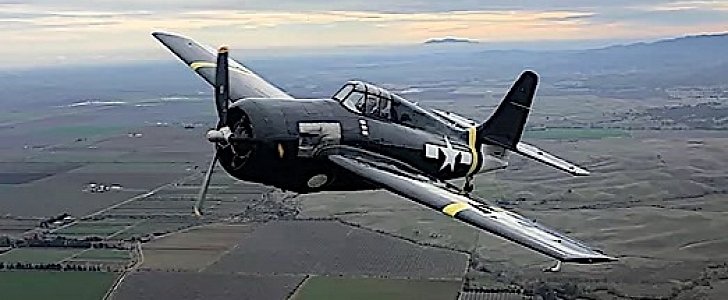Even in the modern age it is hard to understand how the airplanes of the Second World War managed to operate so greatly, in extreme combat conditions and even heavily damaged. What the engineers of those times managed to do is nothing short of extraordinary.
When the hammer of war hit the U.S. out of the blue in 1941, America had only one fighter aircraft capable of holding off the onslaught of the Japanese Mitsubishi Zeroes. It was the single-engined Grumman F4F Wildcat, a carrier-based fighter first made in 1937.
Because it was initially intended to be a biplane, the Wildcat was extremely simple in design, lacking things other subsequent warplanes took for granted, like a hydraulic system. This didn’t stop it from giving the Japanese hell in battles over Guadalcanal, Iwo Jima, or Okinawa.
Over the course of its production run, which ended in 1945, over 7,000 Wildcats were made for either the U.S. or the Royal Navy (the Brits called it Martlet), in close to 15 variations. Dog fights involving Wildcats ended up with over 1,300 enemy airplanes being destroyed, and the American machine achieved a kill ratio that was close to 7:1.
For its work during the war, the Wildcat and its pilots were awarded 8 Congressional Medal of Honor titles, making it the most decorated WWII fighter aircraft.
One of the Wildcat variations made during the war years was the FM-2, a lighter version of the original meant primarily for escort operations. FM-2’s production was handled by General Motors' Eastern Aircraft division, as Grumman moved on to produce the Hellcat.
It’s unclear how many FM-2 Wildcats are still around, but here’s one, restored to its former glory, waiting for a buyer on a specialized website.
Selling for $1,225,000, it comes painted in the colors of one of the era’s Navy squadrons. The airplane has been restored, and since work on it ended it has been flown for 625 hours.
Because it was initially intended to be a biplane, the Wildcat was extremely simple in design, lacking things other subsequent warplanes took for granted, like a hydraulic system. This didn’t stop it from giving the Japanese hell in battles over Guadalcanal, Iwo Jima, or Okinawa.
Over the course of its production run, which ended in 1945, over 7,000 Wildcats were made for either the U.S. or the Royal Navy (the Brits called it Martlet), in close to 15 variations. Dog fights involving Wildcats ended up with over 1,300 enemy airplanes being destroyed, and the American machine achieved a kill ratio that was close to 7:1.
For its work during the war, the Wildcat and its pilots were awarded 8 Congressional Medal of Honor titles, making it the most decorated WWII fighter aircraft.
One of the Wildcat variations made during the war years was the FM-2, a lighter version of the original meant primarily for escort operations. FM-2’s production was handled by General Motors' Eastern Aircraft division, as Grumman moved on to produce the Hellcat.
It’s unclear how many FM-2 Wildcats are still around, but here’s one, restored to its former glory, waiting for a buyer on a specialized website.
Selling for $1,225,000, it comes painted in the colors of one of the era’s Navy squadrons. The airplane has been restored, and since work on it ended it has been flown for 625 hours.







